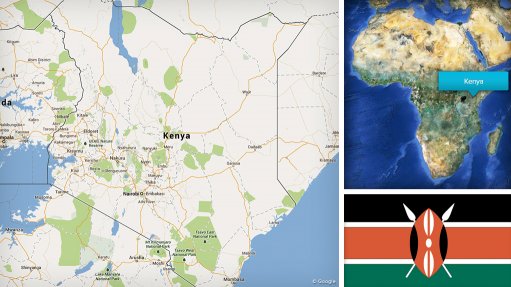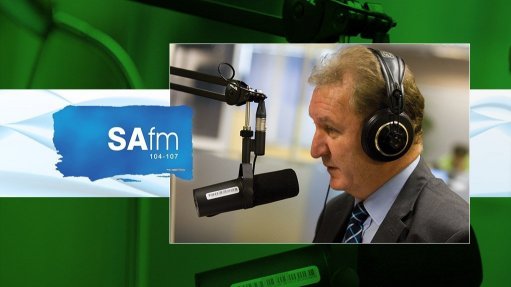Draft public transport policy to provide guidance for existing, new subsidies
The draft National Public Transport Subsidy Policy, which has been gazetted, is aimed at introducing outcomes-based planning for integrated public transport.
There are currently no guidelines for how implementing agents should allocate the existing subsidies the country provides for transport. The majority of public transport subsidisation goes to rail, at about 56%, and buses, at about 43%.
The country currently allocates 0.76% of gross domestic product (GDP) expenditure to public transport subsidies but spends about 12% of GDP in costs for transport, compared with 7% of GDP spent by countries with comparable transport trends, indicating inefficiencies in the transportation network.
Further, the current subsidy reached about 1.6% of people in the country, or about 2.4% of the labour force, about 7.4% of people using public transport or about 2.3% of general commuters, transport specialist consultancy Future of Transport Consulting CEO and member of the policy drafting team Darko Skribensik noted during a Transport Forum event on March 18.
"The current subsidy's reach is very narrow and we have to address this going forward," he said.
"The subsidy for public transport has existed for a couple of decades in South Africa, but we have never had policy to guide the public transport subsidy. The updated White Paper on National Transport Policy in 2021 specifically required the development of guidelines and a policy document to guide and regulate what has been going on for a long time," he added.
This is reflected in the National Treasury's common queries to the Department on Transport, including why specific amounts for subsidies were required, how the designated amounts were arrived at and what the rationale was for the expenditure, he noted.
"The essential aim of the draft policy is that the allocation of the subsidy in the future must be on the basis of planning by area or region, and these must contribute to national transport objectives," he explained.
The implementing agents of the draft national public transport subsidy policy would be municipalities, following a Constitutional Court ruling wherein it was deemed unconstitutional for municipalities not to have authority over transport within their jurisdictions, as stipulated in the Constitution as a statutory duty, said drafting team member and Council for Scientific and Industrial Research (CSIR) transport systems and operations impact area manager Dr Mathetha Mokonyama.
"One of the foundational elements of the draft policy is sustainability, and every rand of expenditure must contribute to better transport for present and future generations," he said.
"Investment in transport infrastructure has lagged behind the need. However, the subsidy policy will allocate capital funding on the basis of transport plans, and the draft policy stipulates that any action needs to be guided by these transportation plans."
Meanwhile, the operational subsidy element of the draft policy would mainly be to subsidise poorer people and could take the form of a digital wallet that could only be used to pay for public transport, he added.
Importantly, the draft policy does not stipulate modes of transport, and instead requires municipalities to develop integrated transport plans across different and suitable modes of transport to achieve specific transport objectives, which will be detailed in their plans.
"The aim of the draft policy is to consolidate public transport as much as possible, optimise what we have, remove leakages and reduce inefficiencies.
"Another important aspect the draft policy introduces is accountability, as the country aims to subsidise based on accountability to and achievement of targets. This will be in contrast to the current and historical way of allocating subsidies, which saw no changes in the patterns of subsidisation over decades and allocations were made based on prior allocations."
The South African system of transport was more expensive per kilometre than it should be, and this was at the expense of society and the economy, Mokonyama said.
The increase in public transport subsidisation to 5% of GDP was aimed at dealing with the massive backlog in transport infrastructure investment and to create greater efficiencies in the transport system, he added.
"The policy aims to support finance for specific goals in an outcomes-based plan. The subsidy is aimed at achieving what is needed in the mobility network," he said.
Meanwhile, amid questions of the capacity of municipalities to develop and implement integrated transport plans, he said national and provincial government must create the conducive environment for municipalities to develop integrated transport plans, and, if necessary, help to capacitate municipalities to be able to undertake transport planning and subsequent contracting across different transport modes.
"There need to be policy targets to achieve, and the impacts must be compared to transport performance benchmarks.
"We have developed some targets already that have been weighted, including minimising system input costs, minimising environmental impact and reducing travel times, among others.
"Municipalities will need to show in their plans how they will achieve these outcomes in each location that they will be targeting across the transport network," said Mokonyama.
The draft policy is focused on the network and the planning authorities must plan on how to achieve the specific outcomes.
The draft policy targeted a minimum average speed of 30 km/h to 40 km/h for commuters across various transport modes during peak traffic periods, he illustrated.
"It is not just about buses or taxis, but about creating a network that produces these speed outcomes," he said.
Targets were an element that had been grossly lacking in municipal transport plans. There were budgets, but rarely clear policy targets to achieve objectives. To transform transport, the draft policy aimed to get municipalities to indicate targets and then report on them. The draft policy suggested yearly reviews of the plans, Mokonyama said.
Additionally, to control the quality of service, government needs to contract to ensure predictable outcomes, which need to be specified in the plans.
"A large portion of our population is struggling, and the economy is being held back in part by the inefficiencies for each kilometre travelled. Maintaining the status quo will lead to entrenching poverty more deeply in our society.
"The alternative is to invest in and improve transportation through an outcomes-based, planned and phased approach to reduce costs, and improve efficiencies and access for citizens.
"Going forward, the aim is to embed accountability into transport planning and execution, which has not been present," he said.
The public have until March 31 to comment on the draft policy.
Comments
Press Office
Announcements
What's On
Subscribe to improve your user experience...
Option 1 (equivalent of R125 a month):
Receive a weekly copy of Creamer Media's Engineering News & Mining Weekly magazine
(print copy for those in South Africa and e-magazine for those outside of South Africa)
Receive daily email newsletters
Access to full search results
Access archive of magazine back copies
Access to Projects in Progress
Access to ONE Research Report of your choice in PDF format
Option 2 (equivalent of R375 a month):
All benefits from Option 1
PLUS
Access to Creamer Media's Research Channel Africa for ALL Research Reports, in PDF format, on various industrial and mining sectors
including Electricity; Water; Energy Transition; Hydrogen; Roads, Rail and Ports; Coal; Gold; Platinum; Battery Metals; etc.
Already a subscriber?
Forgotten your password?
Receive weekly copy of Creamer Media's Engineering News & Mining Weekly magazine (print copy for those in South Africa and e-magazine for those outside of South Africa)
➕
Recieve daily email newsletters
➕
Access to full search results
➕
Access archive of magazine back copies
➕
Access to Projects in Progress
➕
Access to ONE Research Report of your choice in PDF format
RESEARCH CHANNEL AFRICA
R4500 (equivalent of R375 a month)
SUBSCRIBEAll benefits from Option 1
➕
Access to Creamer Media's Research Channel Africa for ALL Research Reports on various industrial and mining sectors, in PDF format, including on:
Electricity
➕
Water
➕
Energy Transition
➕
Hydrogen
➕
Roads, Rail and Ports
➕
Coal
➕
Gold
➕
Platinum
➕
Battery Metals
➕
etc.
Receive all benefits from Option 1 or Option 2 delivered to numerous people at your company
➕
Multiple User names and Passwords for simultaneous log-ins
➕
Intranet integration access to all in your organisation




















